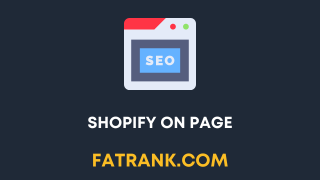
Shopify On Page SEO Tutorial
Contents
- Key Takeaways:
- Introduction to Shopify On Page SEO Tutorial
- Shopify SEO-friendly Features
- Guidelines for optimizing page titles
- 8 Key Steps to Master SEO for Your Shopify Store
- Basics of Shopify SEO for New Merchants and Growth Marketers
- E-commerce SEO Beginner’s Guide for Shopify Stores
- Registering a Shopify Store with Google Search Console and Bing Webmaster Tools
- How to Optimize a Shopify Store for SEO to Increase Traffic and Sales
- Conclusion: Importance of Ongoing SEO Efforts and Monitoring Performance through Analytics
- Some Facts About Shopify On Page SEO Tutorial:
- FAQs about Shopify On Page Seo Tutorial
- What is Shopify On Page SEO?
- What are some best practices for optimizing page titles on Shopify?
- How can I optimize my Shopify site structure for SEO?
- What are some strategies for optimizing product pages on Shopify?
- Is social media important for Shopify SEO?
- How can I use Google Search Console and Bing Webmaster Tools for Shopify SEO?
- Other Shopify Guides
Key Takeaways:
- On Page SEO is the process of optimizing a website’s internal elements to increase traffic from search engines.
- Shopify offers built-in SEO settings, including the ability to edit page titles, which is a key area of optimization.
- To master SEO for your Shopify store, simplify site structure, conduct keyword research, optimize product pages with relevant keywords, and build backlinks and social media presence.
- Paid Ads are often recommended to drive traffic and sales to Shopify stores, but organic traffic through SEO has the highest ROI.
- Registering your Shopify store with Google Search Console and Bing Webmaster Tools and submitting an XML sitemap can help with accurate and quick indexing.
- Shopify’s SEO-friendly features include clean URLs, automatic sitemap generation, and customizable meta tags.
- To increase organic traffic to their online stores through SEO, ecommerce businesses must optimize product pages with relevant keywords and obtain backlinks from relevant websites.
- Ongoing SEO efforts and monitoring performance through analytics are crucial for success.
Introduction to Shopify On Page SEO Tutorial
Shopify On-Page SEO Tutorial is a comprehensive guide to optimizing Shopify stores for organic search visibility. In this tutorial, we will explore the significance of On-page SEO and how it can help Shopify stores to rank higher in search engine result pages. We’ll take a closer look at how optimizing On-page content, titles, descriptions, and URLs can result in improved online visibility and increased organic traffic.
Importance of On-page SEO for Shopify Stores
On-page SEO is of utmost importance for Shopify stores as it helps optimize each webpage to appeal to search engines. By embracing on-page SEO, online businesses can draw more organic traffic, which increases their chances of conversions. The right implementation of on-page SEO can significantly enhance a Shopify store’s visibility and search engine ranking.
For a comprehensive on-page SEO strategy, Shopify store owners must consider various factors, such as page titles optimization, content structure, and mobile responsiveness. Keyword research and backlink building are also crucial, but they must meet best practices. Attend to these elements, and your store becomes easily crawlable by Google bots or any other search engine crawler.
In addition to boosting search engine rankings, optimizing your on-page SEO enhances the user experience by making your site easy to navigate and understand. This, in turn, improves your chances of retaining visitors who find what they are looking for or those who explore more content. Ultimately, implementing on-page SEO for your Shopify store is vital to generating repeat traffic, leading to long-term success.
Shopify SEO-friendly Features
As an e-commerce platform, Shopify offers a range of SEO-friendly features that are designed to improve the online visibility of your store. These features include optimizing your website’s structure, adding meta descriptions and title tags, generating XML sitemaps, implementing canonical tags, and enabling Google Analytics integration. By using these tools, you can enhance the user experience for both customers and search engines, ultimately leading to higher search rankings and increased traffic to your online store.
One of the key benefits of using Shopify is the ability to optimize your website’s structure. With easy-to-use navigation menus and SEO-friendly features, Shopify enables you to create a website that is structured to rank highly in search engine results pages.
Another useful feature of Shopify is the ability to add meta descriptions and title tags. These elements provide contextual information to search engines, helping them understand what your site is all about. Additionally, Shopify can automatically generate XML sitemaps, making it easier for search engines to crawl and index your website.
To prevent duplicate content issues, Shopify offers canonical tags that help search engines understand which page to display in search results. Furthermore, the platform seamlessly integrates with Google Analytics, allowing you to track and analyze important metrics related to your online store.
Shopify also provides various resources to help store owners optimize their websites for search engines. These include a blog, a comprehensive help center, and a range of apps that can assist with SEO optimization.
It’s no surprise that Shopify is one of the most popular e-commerce platforms worldwide, with over a million businesses using it to power their online stores. If you’re looking to improve your online visibility and drive more traffic to your store, taking advantage of Shopify’s SEO-friendly features is a smart choice.
Guidelines for optimizing page titles
Optimizing page titles is crucial for ensuring that your website ranks higher in search engine results. By using relevant, descriptive titles that include proper keywords, you can potentially improve the visibility of your website.
To optimize your page titles, you can follow these three guidelines: include the primary keyword, include a secondary, related keyword, and keep it concise and relevant. Including the brand name in the page title can improve brand recognition and establish credibility. It’s important to avoid keyword stuffing and to create titles that sound professional and natural.
By following these guidelines for optimizing page titles, you can potentially improve your website’s visibility and attract more users.
8 Key Steps to Master SEO for Your Shopify Store
If you’re running an online store on Shopify, then you already know the importance of ranking high on search engines. In this section, we’re going to discuss what you need to do to master SEO for your Shopify store. With these 9 key steps, you’ll be able to optimize your site structure, conduct proper keyword research, create high-quality content, and maximize your visibility on search engines. So, let’s dive in and get your Shopify store ranking higher and generating more traffic and sales!
Step 1: Optimize your Shopify site structure
To optimize your Shopify site structure, start by organizing your products into broad categories that make sense for your business. Create subcategories under each category to further organize your products, but be careful not to create too many unnecessary subcategories that may confuse users and dilute the SEO value of your pages.
Consider adding collections to group related products together, making it easier for users to find what they are looking for. Adding internal links between relevant pages also helps search engines understand how your pages are connected.
Tags can also be used, but carefully consider their use as they can dilute the SEO value of your pages if used excessively. Remember that an optimized site structure helps not only with SEO but also with user experience. By making it easier for users to find what they are looking for, you increase the chances of them making a purchase.
In addition to simplifying the site structure, other technical aspects of on-page optimization should be considered, such as optimizing images, writing clear and concise meta descriptions, and configuring URL structures properly.
It is vital to periodically review and update your site structure based on changes in product offerings or user behavior. A well-organized site structure helps both search engines and users easily navigate your store, resulting in increased traffic and conversions. Keep your site structure simple and streamlined to avoid overwhelming readers with too many categories and subcategories.
Simplify site structure, avoid too many categories & subcategories
To enhance the on-page SEO of a Shopify store, it is essential to simplify the site structure and avoid using too many categories and subcategories. By doing so, you can create a clear and concise website with main categories that users can easily navigate. This will increase organic traffic and improve user experience, both of which are crucial for optimizing a Shopify store for search engines.
An effective way to optimize your Shopify store’s site structure is to reduce complexity and minimize categorization. This can be achieved through semantic NLP variations of your site’s headings. By clearly defining your categories and subcategories, search engine crawlers will be able to categorize your website based on relevant content, making it easier for them to understand what your store’s products are.
Additionally, ambiguous navigation may cause users to bounce off your website, decreasing your SERPs ranking. To prevent this, use breadcrumbs or a search bar to help users find their way around your site. Breadcrumbs are essential in enhancing user experience and displaying their path from the homepage to the end product. Search bars allow users to filter results according to their needs, making the process of purchasing faster and more convenient.
Incorporating these basic SEO principles and approaches will help new merchants and growth marketers get their Shopify stores noticed and increase their chances of success.
Basics of Shopify SEO for New Merchants and Growth Marketers
If you’re a merchant or a growth marketer new to Shopify, optimizing your SEO strategy can make all the difference. In this section, we’ll discuss the basics of Shopify SEO that can help you improve online visibility and rank higher on search engine results pages. From SEO principles to technical optimization, we’ve got you covered. You’ll learn about on-page SEO approaches to create more friendly and useful content, and off-page SEO techniques focused on building backlinks and social media presence. Lastly, we’ll explore technical SEO, including optimizing your site speed, mobile responsiveness, and structure.
SEO Principles and Basic Rules
Search Engine Optimization (SEO) principles and rules are crucial for improving the visibility and ranking of a Shopify store to attract potential customers. It is fundamental to understand that SEO is an essential part of any online business, and thus, it should be implemented efficiently. The concepts involved in SEO principles and basic rules are essential knowledge for growing merchants and marketers.
It is vital to optimize page titles, meta descriptions, URL structure, header tags, alt tags for product images, internal linking structure, etc., while considering both keyword optimization and user-friendliness. Meta descriptions serve as brief summaries of your content in search results pages; hence, they must be crafted with utmost attention to engage users.
An effective on-page SEO strategy involves creating high-quality content using relevant keywords while being coherent with visitor needs. Utilizing social media to build backlinks for custom promotional campaigns across multiple channels drives traffic from various sources. Also, technical factors like website speed optimization should be considered alongside other optimization tactics.
While emphasizing DIY solutions, it is essential to make sure that all cultural requirements are met. We need to consider balancing website optimization through an enhanced user experience with great content generation that fits naturally into our target audience’s search criteria.
Understanding SEO principles and basic rules is instrumental towards the growth of a Shopify store. However, their meaning has evolved from simple keyword stuffing practices towards a more organic approach that takes into account metrics such as time-on-site and adjusted bounce rates that reflect usable data insights into how customers behave within our digital storefronts.
On-page SEO Approaches to Make Content Friendly and Useful
To enhance a website’s performance in search results, there are various on-page SEO approaches that can be employed. These strategies entail optimizing content to provide value to the reader and to make it easy for search engines to understand.
Creating high-quality content is one of the most effective tactics, by using relevant keywords throughout the text and incorporating multimedia elements like images or videos to increase engagement and offer more context to both readers and search engines. Another vital approach is optimizing HTML tags such as headings, titles, and meta descriptions with the relevant keywords to accurately describe the page’s content. By doing this, search engines can understand what the website represents and the interrelatedness between the pages.
Providing a positive user experience is also vital in elevating on-page SEO, which can be achieved through mobile responsiveness, fast loading times, and easy navigation. Technical issues such as duplicate content or broken links should be resolved to improve the overall website performance.
It should be emphasized that implementing these approaches is an ongoing process that calls for constant monitoring and regular adjustments based on their performance over time. By continually improving on these tactics, a website can achieve long-term success in their search rankings.
As per the “Shopify On-Page SEO Tutorial,” employing these tactics can make content friendly and useful for on-page SEO purposes. It is also recommended to promote online stores through backlinks to boost Shopify SEO ranking.
Off-page SEO: Building Backlinks and Social Media Presence
Off-page SEO refers to the optimization strategies implemented outside of a website to enhance its search engine ranking. In particular, focusing on building high-quality, relevant backlinks from authoritative websites is vital to Google’s ranking algorithm, as this can significantly boost a website’s credibility and visibility online. Establishing a strong social media presence is also a critical aspect of any comprehensive digital marketing strategy and can be leveraged effectively for off-page SEO. Sharing engaging content across social media platforms and engaging with audiences can ultimately drive more traffic to a website and increase brand awareness.
Guest blogging is an effective method of building quality backlinks while showcasing expertise in the industry. Infographics are not only visually appealing but also readily shareable across social media, making them a useful tool for presenting information and establishing credibility in the field. Engaging with online communities, such as forums or Q&A sites, is also an excellent way to build backlinks and establish authority in a particular niche.
However, it is crucial to prioritize maintaining a positive reputation by avoiding any unethical practices such as link buying or utilizing spammy techniques. Opting for ethical optimization methods might take time, but their results are long-lasting and benefit both users and businesses in the long run. Regularly monitoring crucial key performance indicators (KPIs), such as organic traffic, bounce rate, conversion rates, etc., is essential in assessing the effectiveness of off-page optimization efforts over time, as emphasized in the Shopify On Page SEO Tutorial: Importance of Ongoing SEO Efforts and Monitoring Performance through Analytics.
Technical SEO: Optimizing Site Speed, Mobile Responsiveness and Structure
Website speed, mobile responsiveness, and structure optimization are all key components of Technical SEO. This includes optimizing HTML tags, refining site architecture, optimizing media files, and reducing page load times to improve user experience.
It is imperative to improve website speed as it enhances the user experience, whereby visitors expect a smooth browsing experience. A fast-loading website contributes to lower bounce rates and higher conversion rates. In addition to that, mobile responsiveness ensures that the site displays correctly on all device sizes and types. Sites that do not have mobile responsiveness feature get penalized by Google search rankings.
The negative consequences of slow speeds on mobile devices and poor structure adversely affect ranking factors, making this area of optimization vital for any successful online business. In order to ensure swift page loading time, it is recommended to reduce website size by minimizing the use of plugins and optimizing images.
Here’s a pro tip: Minimize the use of plugins and optimize images to reduce website size for swift page loads.
For Shopify stores, this beginner’s guide is tailor-made to help master the art of e-commerce SEO.
E-commerce SEO Beginner’s Guide for Shopify Stores
Elevate your Shopify store’s visibility with top-notch e-commerce SEO practices. In this guide, we’ll explore various tactics to boost your store’s rankings and drive more traffic to your site. From conducting in-depth keyword research and optimizing on-page elements, to acquiring valuable backlinks, we’ll provide actionable steps to help you achieve your goal of appearing among the top 10 organic search results.
Keyword Research, Site Structure, Organization and On-page SEO
For businesses aiming at effective online visibility and increased sales, optimizing their Shopify stores is a crucial task. This involves various factors such as conducting thorough keyword research, maintaining a well-structured website, and implementing effective on-page SEO techniques. By understanding and utilizing these fundamental elements, businesses can create a well-optimized website that satisfies both search engine algorithms and user experience requirements.
One approach to better comprehend the different elements involved in optimizing your Shopify store is to use a table that showcases these components. This includes creating useful and relevant content that includes targeted keywords, developing a good site structure for better user experience, and implementing best on-page SEO practices. By adopting semantic variations of the keywords across specific sections like headings and tags, businesses can significantly enhance their SEO performance. The table below outlines some of the critical components involved in optimizing Shopify stores.
| Keyword Research | Site Structure & Org | On-page SEO |
| Search terms | URL structure | Targeting |
| Competitor analysis | Navigation | Metrics |
| Content development | Categories | Sitemap |
| Meta Tags |
However, other unique features contribute to boosting SEO rankings, such as off-page SEO efforts like link building and utilizing social media channels to attract organic traffic. It is therefore essential for businesses to invest in regular technical site audits that measure page speed performance and track data using analytics tools. Broken links, for instance, can adversely affect a website’s performance, leading to negative signals and possible penalizations by search engines.
In conclusion, optimizing your Shopify store requires a combination of effective keyword research, strategic content creation, good site structure, and on-page SEO techniques. With a thorough understanding of these elements and their significance, businesses can create websites that attract increased traffic and boost sales.
Optimizing Product Pages with Relevant Keywords and Obtaining Backlinks
When it comes to improving a Shopify store’s SEO, optimizing product pages with relevant keywords and obtaining backlinks are critical components. These tactics can increase the visibility of products in organic search results, leading to increased traffic and ultimately more sales.
In order to optimize product pages for SEO, merchants must first conduct thorough keyword research to identify terms that are aligned with their target audience’s search intent. These relevant keywords should then be incorporated naturally into product titles, descriptions, headings, and even image alt tags to improve relevance signals for search engines.
Link building strategies are also crucial for boosting a Shopify store’s SEO. Merchants should focus on obtaining valuable backlinks from reputable websites, as this signals credibility to search engines about the quality and relevance of their products. Tactics such as guest posting, influencer outreach, and social media promotion can all help to diversify the domains linking back to a Shopify store’s product pages.
To fully optimize a product page, merchants should ensure that each page has unique meta descriptions, proper URL slugs, relevant categories, and tags for easy navigation and internal linking opportunities. These combined strategies will greatly contribute to ranking higher in organic search results.
Goal: Have Product Pages Appear Among the Top 10 Organic Search Results
To achieve the goal of having their product pages appear among the top 10 organic search results and increase traffic and sales, Shopify store owners should focus on implementing a comprehensive SEO strategy that includes both on-page and off-page optimization.
The on-page SEO tactics involve conducting thorough keyword research and using relevant keywords in the product titles, descriptions, URLs, and image alt tags. Additionally, the site structure should be well-organized with easy-to-navigate categories and a reasonable number of subcategories.
Off-page SEO is equally crucial and involves building high-quality backlinks from reputable sources and developing an active social media presence with relevant content. This can attract more followers who may link back to the product pages, boosting domain authority and increasing visibility in organic search results.
Technical SEO should not be overlooked as it forms the foundation for everything else. Shopify stores should ensure that their site speed is optimized for mobile devices while providing accurate structured data for Google to display rich results. It is also crucial to have an SSL certificate installed on the site.
Regular monitoring of website analytics is also a crucial part of the SEO strategy, and registering with Google Search Console and Bing Webmaster Tools can help get the Shopify store noticed by the big players. By implementing these various SEO practices together, Shopify store owners can have a better chance of achieving their goal and appearing among the top 10 organic search results for their product pages.
Registering a Shopify Store with Google Search Console and Bing Webmaster Tools
Registering your Shopify store with Google Search Console and Bing Webmaster Tools is crucial for SEO success. It’s not only about notifying them that your store exists, but also assisting search engines with indexing your site accurately and quickly. In this section, we’ll explain the importance of registering with both services for SEO and how submitting an XML sitemap can help you achieve your SEO goals.
Importance of Registering with Both Services for SEO
Registering with both Google Search Console and Bing Webmaster Tools is crucial for the SEO of a Shopify store. It’s essential for merchants to take all necessary actions to improve their Shopify store’s online visibility and ensure that their website is indexed accurately and quickly. By registering with these services, merchants can notify search engines about the existence of their website, enhancing their chances of appearing at the top of search engine results pages (SERPs).
Merchants who register with both Google Search Console and Bing Webmaster Tools ensure that all of their web pages are indexed correctly, leading to higher visibility in SERPs. Submitting an XML sitemap to both services further helps in indexing the site properly, and this increases the likelihood of driving more traffic to the website, which in turn leads to more potential sales.
It is essential to note that merchants who overlook registering their Shopify store with these services run the risk of placing lower on SERPs, leading to less traffic and fewer potential leads. Thus, it’s crucial to take these actions to ensure greater visibility in search engines and an increased chance of generating profitable leads for the Shopify Store.
In conclusion, as a Shopify store owner, it’s crucial to register with both Google Search Console and Bing Webmaster Tools to improve your website’s SEO ranking. Let Google and Bing know you exist by registering your Shopify store, and enjoy better indexing and SEO results.
Registering Notifies Google and Bing of the Store’s Existence and Helps with Indexing
Registering with Google Search Console and Bing Webmaster Tools is crucial for Shopify stores to improve their SEO. It notifies Google and Bing of the store’s existence and enables them to crawl and index the website effectively. Doing so helps in making the website more visible to potential customers, which can increase traffic and sales. An XML sitemap can also be submitted to both services, which helps with accurate and quick indexing.
Furthermore, registering with Google and Bing helps in identifying any SEO issues with the website. These services provide insights into organic search traffic, click-through rates, and mobile usability issues, among other things. Monitoring such data can help in optimizing content for better rankings on search engines.
In addition to this, submitting an XML sitemap allows search engines to crawl the website’s pages systematically without missing any. It also informs them about any changes made on the site regularly. As a result, regular monitoring through these platforms is necessary for maintaining optimal rankings on search engines and keeping up with changes in their algorithms.
Therefore, it is important to register with Google Search Console and Bing Webmaster Tools to notify them of the store’s existence and help with indexing. Submitting your XML sitemap is also crucial for effective crawling and accurate indexing by these search engines.
Submitting an XML Sitemap to Both Services Helps with Accurate and Quick Indexing
Submitting an XML sitemap to both Google Search Console and Bing Webmaster Tools can greatly enhance a Shopify store’s indexing accuracy and speed. This highly effective process assists search engines in crawling, indexing, and comprehending the site content, resulting in increased organic traffic.
To submit the XML sitemap to both services, you just need to follow three simple steps. Firstly, create an XML sitemap using either the built-in feature on Shopify or a third-party tool. Next, register your Shopify store with both Google Search Console and Bing Webmaster Tools, ensuring domain ownership verification. Lastly, provide the URL of your XML sitemap in the relevant sections of both services. This helps search engine spiders prioritize crawling and indexing mapped content, rather than irrelevant pages.
New merchants and growth marketers must keep in mind that submitting an XML sitemap is only one aspect of successful SEO optimization. While this process optimizes the structure of the website for indexing, other strategies must also be implemented to increase visibility on SERP rankings and attract potential buyers. These methods include obtaining backlinks from authoritative sites, creating valuable on-page content optimized for keywords discovered via thorough research using tools like Google Keyword Planner or Ahrefs, and technical optimization like elimination of broken links or reducing page load speeds. All these can lead to success in enterprise-level e-commerce platforms such as Shopify.
In conclusion, optimizing a Shopify store for SEO with the help of submitting an XML sitemap to both services is akin to giving it a superpower, boosting traffic and sales to new heights.
How to Optimize a Shopify Store for SEO to Increase Traffic and Sales
By optimizing your Shopify store for SEO, you could see a significant increase in both traffic and sales. In this section, we’ll take a closer look at how you can achieve this goal. We’ll break down the topic into four sub-sections – Shopify’s basic SEO practices, Technical SEO, On-page SEO, and Off-page SEO. Let’s dive into the world of Shopify SEO together!
Shopify’s Basic SEO Practices
To ensure that your Shopify store is easily discoverable by search engines and potential customers, it is crucial to follow some basic SEO practices. These practices lay the foundation for optimizing your site and enhancing its visibility on search engine results pages (SERPs).
One of the key aspects of Shopify’s basic SEO practices is technical SEO. This involves optimizing different elements of your site to make it crawlable and indexable by search engines. Some technical SEO practices include improving site speed, ensuring mobile responsiveness, and optimizing site structure.
Another important aspect of Shopify’s basic SEO practices is on-page optimization. This entails creating high-quality content that contains relevant keywords and is structured in a way that makes it easy for both users and search engines to understand.
Additionally, off-page optimization plays a crucial role in improving your site’s visibility and authority in the eyes of search engines. One effective way to achieve this is by building quality backlinks from authoritative sites in your industry or niche. You can also leverage social media platforms to increase brand awareness, build relationships with customers, and drive traffic back to your site.
Overall, implementing these basic Shopify SEO practices can help you create a solid foundation for optimizing your store and increasing its online visibility over time. However, it is important to keep in mind that SEO is an ongoing process that requires constant monitoring and improvement over time through analytics tracking and other performance monitoring tools.
Chapter 1: Technical SEO
If you want to improve your website’s search engine visibility and performance, you need to focus on optimizing its technical components – this is what we call technical SEO. When it comes to technical SEO, everything related to your website’s infrastructure is important, including its site architecture, mobile responsiveness, structured data, page speed, and security. By optimizing these technical elements, you can make it easier for search engines to crawl and index your website.
If you’re running a Shopify store, you need to pay attention to the technical aspects of your website. Start by auditing your navigation, URL structure, meta tags, images optimization, page speed, and resolving any crawling and indexing errors that may affect your store’s ranking in SERP. Having a speedy website is crucial as it reduces bounce rates, which leads to higher chances of sales. You can also set up an XML sitemap to inform search engines about any new pages or content added or updated in your store so they can index accordingly.
While technical SEO is crucial, it’s not enough to improve your website’s performance – you also need to blend consideration of on-page and off-page SEO. A comprehensive approach focused on all aspects of ecommerce SEO is necessary to maximize your online exposure and monitor your progress towards hitting your ecommerce KPIs. So make sure your page titles and meta descriptions are in line as on-page SEO is not just about keywords anymore.
Chapter 1 focuses on technical SEO, but you’ll also need to consider all aspects of ecommerce SEO to achieve success online.
Chapter 2: On-page SEO
On-page SEO is an essential part of optimizing a website and improving its visibility in search engine results. For ecommerce sites, like Shopify stores, it’s especially important to optimize product and category pages for both users and search engines.
To effectively optimize Shopify pages for search engines, there are a few key elements to consider. First and foremost, thorough keyword research is crucial to ensure relevant keywords are used in page titles, metadata descriptions, headings, and body copy. It’s also important to ensure that URL structures are clean and concise and that clear value propositions are provided on each page.
In addition to these elements, there are technical strategies that can be utilized to improve Shopify store SEO. One popular approach is image optimization, which involves compressing image files for faster loading times and adding alt text to make them easier for search engines to index. Another strategy is implementing Schema markups, which involves embedding JSON-LD code directly into HTML markup, allowing search engines to better understand the information on a page.
Overall, effective On-page SEO involves creating valuable content that’s easy for both humans and search engines to understand. By using relevant keywords, optimizing site structure, providing clear calls-to-action, and utilizing technical optimizations like compressed images and Schema tags, Shopify stores can steadily improve their organic search rankings over time.
Chapter 3: Off-page SEO
Off-page SEO is an essential aspect of optimizing a website’s search engine rankings. It involves external factors such as building quality backlinks and increasing social media presence to boost your website’s popularity among its target audience. This technique is especially crucial for e-commerce store owners who want to drive traffic to their websites and improve their conversion rates.
To create a robust off-page SEO strategy, you need to focus on building high-quality backlinks from authoritative websites and creating informative and shareable blog content. Also, promoting your products on various social media platforms and participating in relevant online communities related to your business niche can help improve your website’s credibility and search engine rankings.
One effective way to build quality backlinks for your e-commerce store is to reach out to bloggers and influencers in your niche or guest post on relevant blogs. You can also use social media channels like Facebook, Instagram, Pinterest, Twitter, and others to create engaging posts that offer value to your target audience and promote your products.
Another important strategy for off-page SEO is monitoring your brand’s mentions across various review sites like Yelp or Google My Business. By addressing any negative feedback, you can improve customers’ experience and satisfaction, further enhancing your domain authority and search engine rankings.
In conclusion, off-page SEO is a critical aspect of any SEO strategy, especially for e-commerce store owners who want to improve their online visibility and drive traffic to their websites. By following the tips above and incorporating the right keywords, you can create a robust off-page SEO strategy that delivers results.
Conclusion: Importance of Ongoing SEO Efforts and Monitoring Performance through Analytics
In today’s online market, the significance of consistent SEO efforts and performance monitoring through analytics cannot be overlooked. For businesses running Shopify stores, it is essential to continuously optimize web pages by incorporating the latest SEO techniques and generating valuable content. This can significantly enhance their visibility and improve organic growth.
To achieve higher rankings on search engine results pages, businesses must keep up with constantly changing trends and algorithms of SEO. Employing relevant keywords and metadata while regularly publishing informative content can aid in achieving this goal.
Furthermore, using advanced tools like Google Analytics can help businesses track website traffic and analyze user behavior. By identifying areas that require improvement, Shopify stores can enhance user experience and generate more leads.
Some Facts About Shopify On Page SEO Tutorial:
- ✅ On Page SEO is the process of optimizing a website’s internal elements to increase traffic from search engines. (Source: https://logeix.com/shopify-seo/onpage)
- ✅ Shopify has built-in SEO settings, including the ability to edit page titles, which is a key area of optimization. (Source: https://optinmonster.com/shopify-seo-guide/)
- ✅ Shopify SEO involves optimizing product pages with relevant keywords and obtaining backlinks from relevant websites. (Source: https://www.shopify.com/blog/ecommerce-seo-beginners-guide)
- ✅ There are three main types of SEO: on-page, off-page, and technical. (Source: https://pagefly.io/blogs/shopify/shopify-seo-how-to-guide-for-beginners)
- ✅ Ongoing SEO efforts and monitoring performance through analytics are important for e-commerce success. (Source: https://ahrefs.com/blog/shopify-seo/)
FAQs about Shopify On Page Seo Tutorial
What is Shopify On Page SEO?
On Page SEO is the process of optimizing a website’s internal elements to increase traffic from search engines. The process generally involves creating and optimizing content around relevant keywords, optimizing site structure and internal linking. Shopify has built-in SEO settings, including the ability to edit page titles, which is a key area of optimization.
What are some best practices for optimizing page titles on Shopify?
Guidelines for optimizing page titles include including the main keyword near the beginning, including secondary keywords where possible, and avoiding making it spammy.
How can I optimize my Shopify site structure for SEO?
Simplify your Shopify site structure and avoid going overboard with categories and subcategories. Filter pages can also be used to help users find specific products or product variants.
What are some strategies for optimizing product pages on Shopify?
Strategies for optimizing product pages on Shopify include including the main keyword in the product title and description, using high-quality images with appropriate alt text tags, and organizing products into relevant product categories. It is also important to use relevant keywords in meta descriptions and URLs and to optimize for mobile responsiveness. Shopify handles some basic SEO practices, but additional efforts may be necessary to rank high on Google.
Building a social media presence can be beneficial for Shopify SEO by increasing brand visibility, generating backlinks, and driving traffic to the site. However, it is important to prioritize other SEO best practices such as keyword research, site structure, and on-page optimization first.
How can I use Google Search Console and Bing Webmaster Tools for Shopify SEO?
Registering a Shopify store with Google Search Console and Bing Webmaster Tools is important for SEO because it notifies Google and Bing of the site’s existence and helps with indexing. Submitting an XML sitemap to both services helps with accurate and quick indexing. Shopify generates a sitemap automatically with the URL www.yourdomain.com/sitemap.xml, which can be submitted in both Search Console and Bing Webmaster Tools from the site’s dashboard.
Other Shopify Guides
Check out our A-Z Shopify SEO Guides:
- A Guide To Robots.txt on Shopify

- Best SEO Apps for Shopify
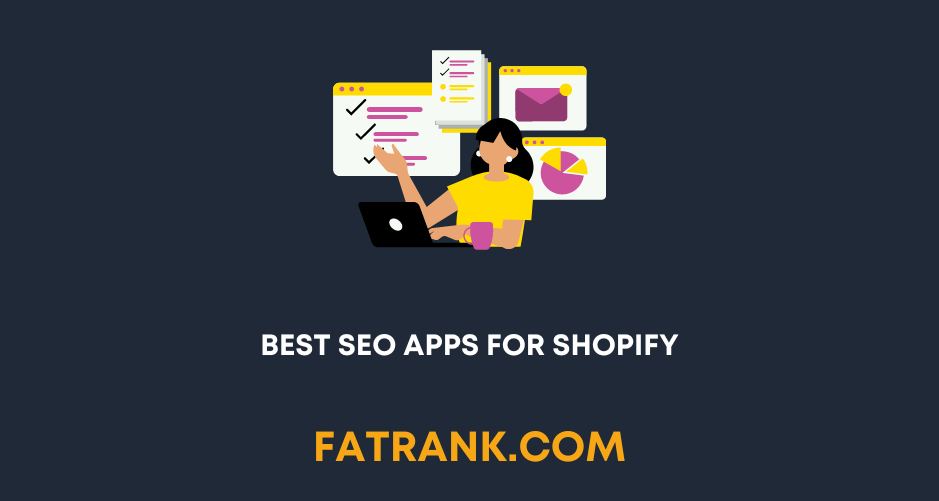
- Best Shopify Themes for SEO

- Blogging on Shopify: How To Do It For SEO Traffic
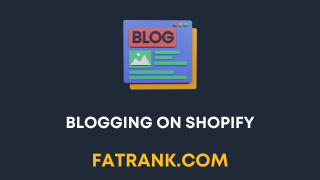
- Can you change the Shopify URL Structure?
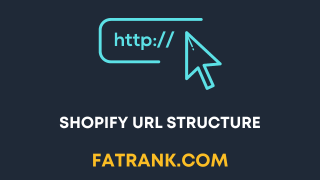
- Common Shopify SEO Issues
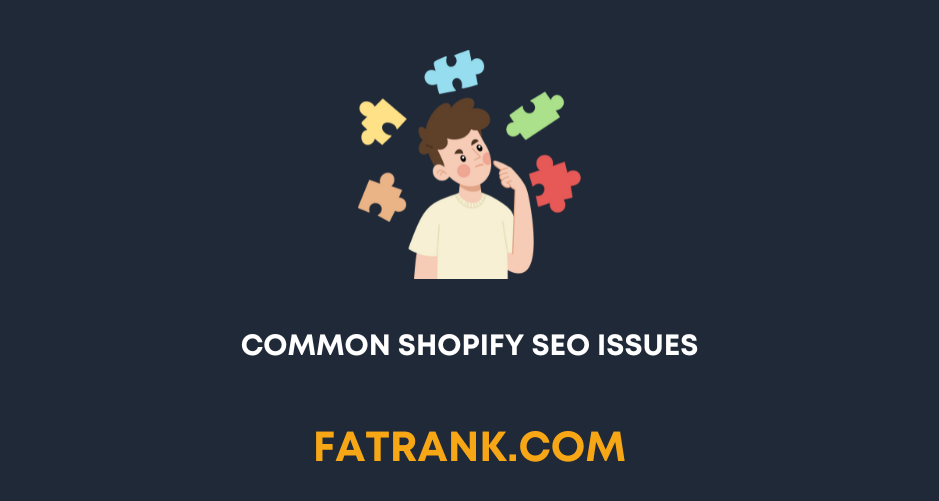
- Does Changing the Shopify Store Name Affect SEO
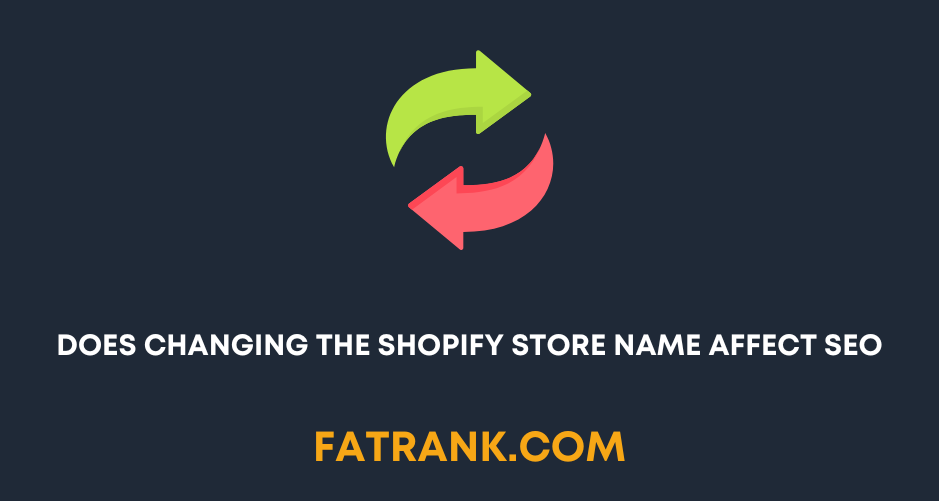
- Guide On Using Metafields In Shopify

- How Much Does Shopify SEO Cost

- How To Add Content To Shopify Collection Pages

- How To Add Keywords To Your Shopify Store For SEO
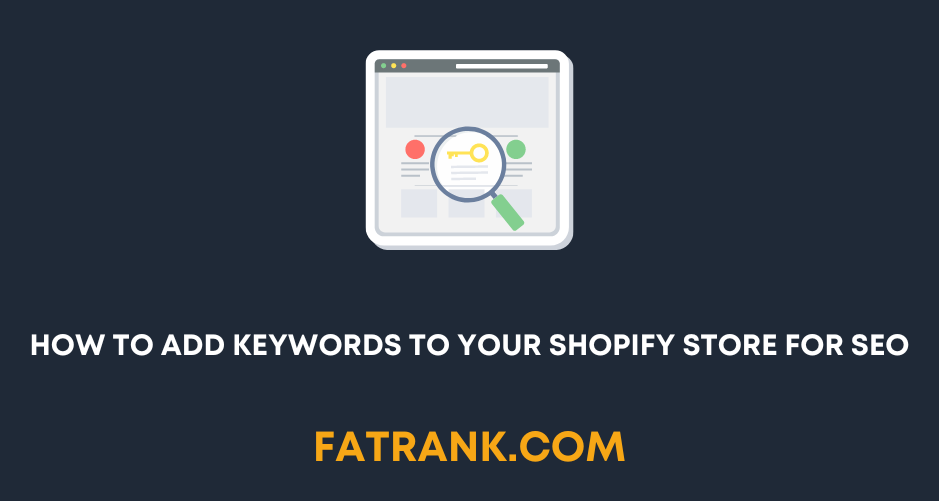
- How To Remove Duplicate Titles From Shopify Store
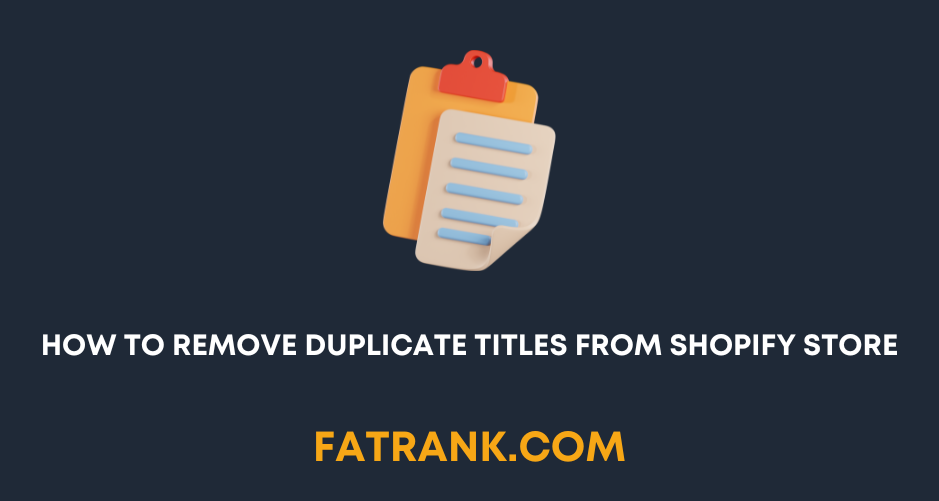
- How to Set up Multiple Shopify Stores Under One Domain

- Improving Search in Shopify Plus
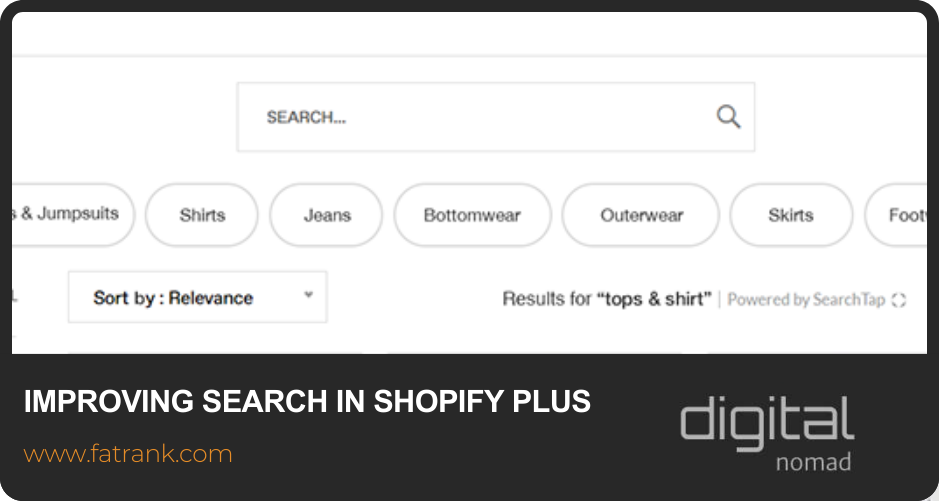
- Is Shopify bad for SEO? A Detailed Review
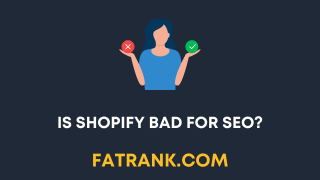
- Keyword Research for Shopify Stores
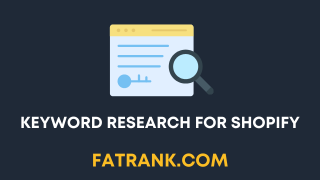
- Link Building for Shopify: Full Tutorial
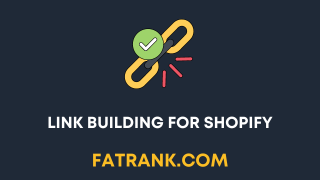
- Shopify Breadcrumbs SEO Issues

- Shopify Collection Page SEO: The Definitive Guide

- Shopify Image Optimization: Speed & SEO Guide
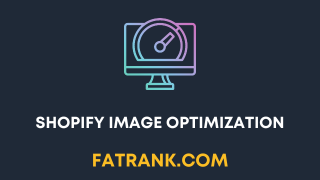
- Shopify International: Multi-Currency & Multilingual Setup
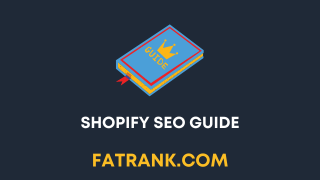
- Shopify On Page SEO Tutorial

- Shopify Plus SEO

- Shopify Plus SEO: Potential Limitations

- Shopify Product Tags SEO: Why It's Bad & How To Fix It
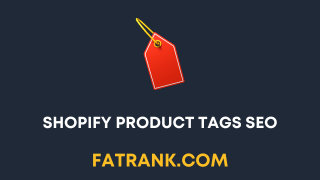
- Shopify Rich Snippets Tutorial: No App Needed

- Shopify SEO Agency
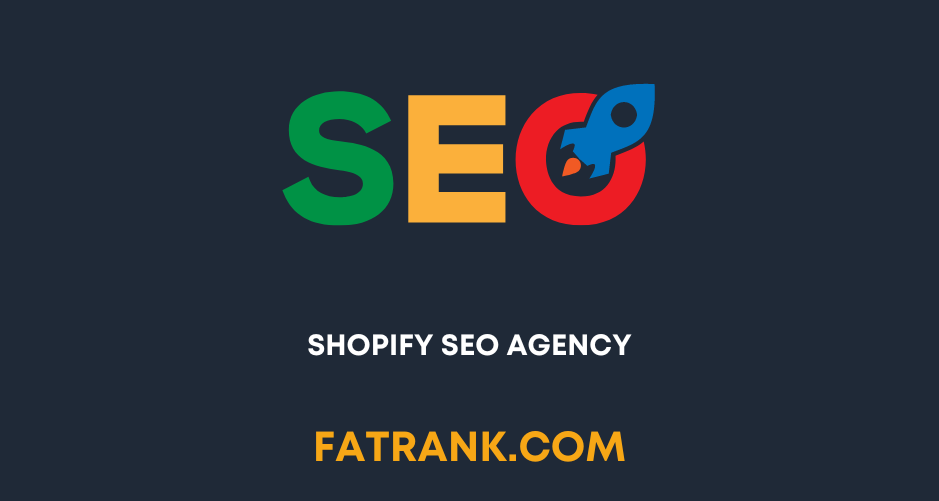
- Shopify SEO Case Study
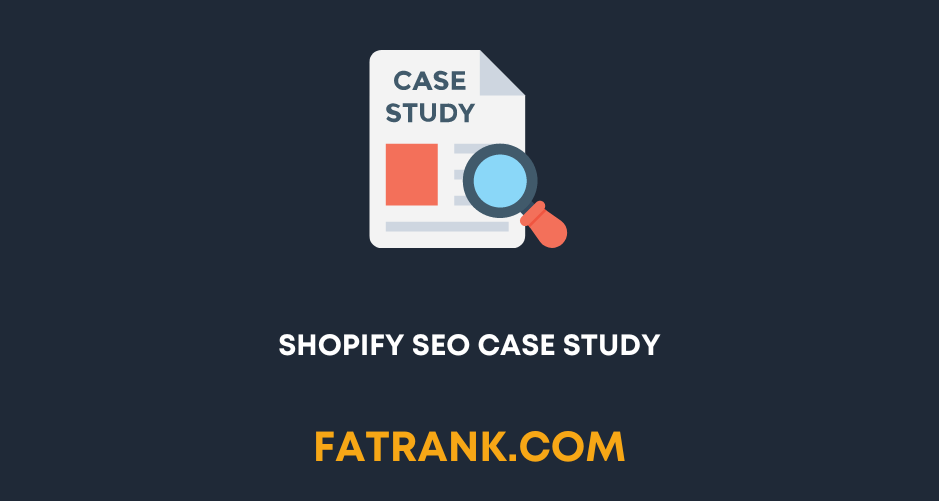
- Shopify SEO Checklist
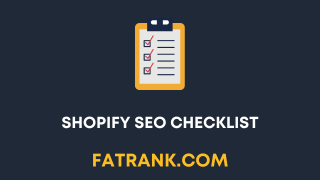
- Shopify SEO: The Definitive Guide

- Shopify Sitemap: Find & Submit Your XML Sitemap to Google
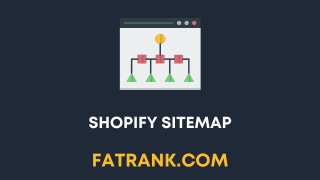
- Shopify Speed Optimization Guide
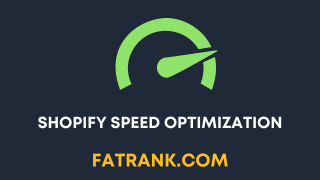
- Technical SEO for Shopify
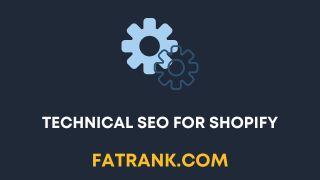
- Why Is No One Buying From My Shopify Store
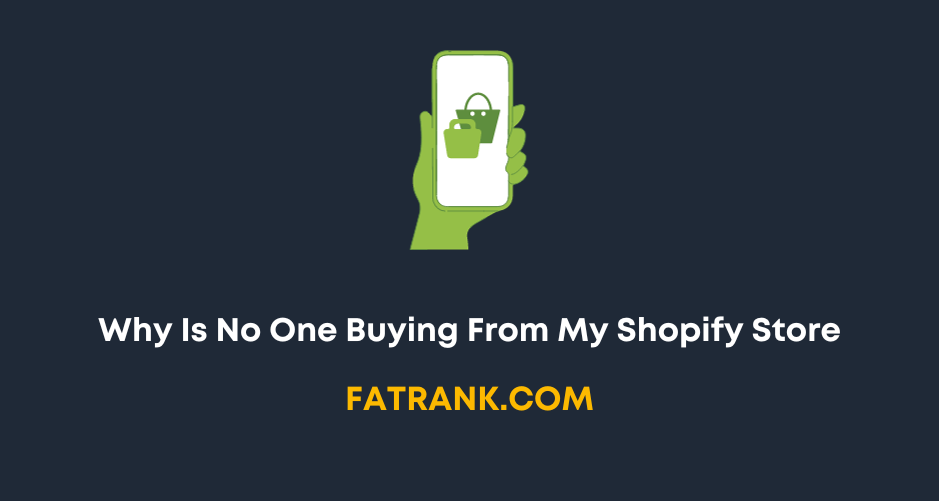
- Workarounds for the Shopify Variants Limit


About FatRank
Our aim to explain and educate from a basic level to an advanced on SEO and Social Media Marketing.
